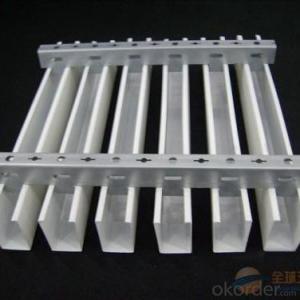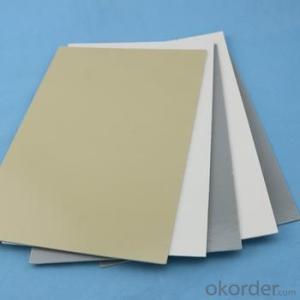Fiberglass FRP Panel Sheet Modular Floor Covering
- Loading Port:
- Tianjin
- Payment Terms:
- TT OR LC
- Min Order Qty:
- 200 m
- Supply Capability:
- 100000 m/month
OKorder Service Pledge
OKorder Financial Service
You Might Also Like
Item specifice
PRODUCT DESCRIPTION
FRP flooring panel is a big size profile which is made by pultrusion technology and in holistic shape, it could form a continuours close plane by unique self-lock structure,which could be used as load structures in various corrosion environments and could replace wood plate, aluminum plate or steel plate etc.
The product could add natural color grit on the surface,which is safe for the anti-slippery,besides it could obtain
the natural appearance and no fadding for a long time.
FEATURES
a. anti-corrosion, non-rusty
b. lightweight and high strength
c. anti-flammable
d. anti-fatigue
e. anti-slippery and safety
f. anti-ageing
g. easy to installation and maintenance
h. excellent electromagnetism property
SPECIFICATIONS
Product | Item | Unit | Value |
FRP sheet | Thickness | mm | 1.0-2.5 |
Width | mm | <2500 | |
Length | mm | Customized or produce in roll | |
Density | g/cm3 | 1.45 | |
Tensile strength | MPa | 124 | |
Bending strength | MPa | 195.8 | |
Compression strength | MPa | 117 | |
Shear strength | MPa | 108 | |
Impact strength | KJ/m2 | 113 | |
FRP composite sheet | Core veneer thickness | mm | 20-100 |
FR4 thickness | mm | 1.2-2.5 | |
Width | mm | <2500 | |
Length | mm | <8000 | |
Thermal conductivity | Kcol/m2 | 0.57-0.117 |
PICTURES
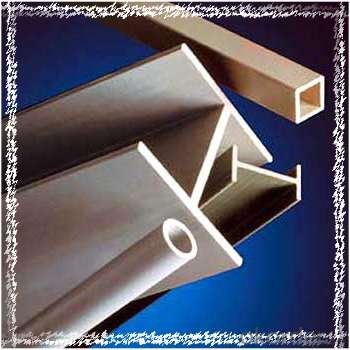
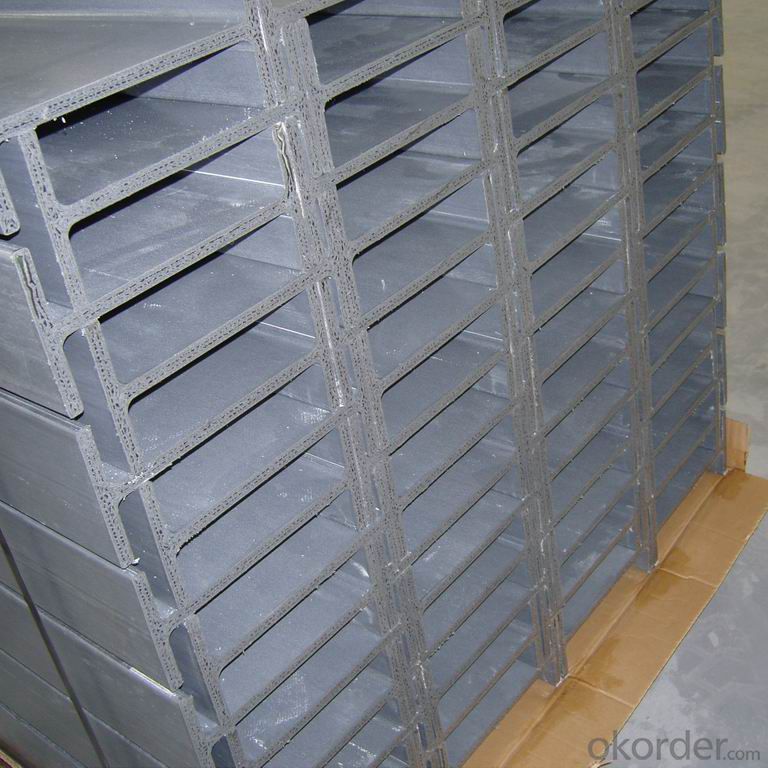
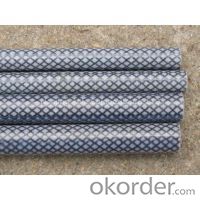
- Q:Do FRP pultrusion profiles require regular maintenance?
- FRP pultrusion profiles do not require regular maintenance. One of the key advantages of FRP (Fiber Reinforced Polymer) is its durability and low maintenance requirements. Unlike traditional materials like wood or steel, FRP does not corrode, rust, or degrade over time. This means that FRP pultrusion profiles do not need to be painted, sealed, or treated for protection against environmental factors such as moisture, UV radiation, or chemicals. Furthermore, FRP is resistant to a wide range of chemicals, making it suitable for various industries, including marine, chemical processing, and wastewater treatment. It also has excellent dimensional stability, meaning it does not warp or deform under changing temperatures or humidity levels. While FRP pultrusion profiles may not require regular maintenance, it is still important to inspect them periodically to ensure their structural integrity. This can involve visual inspections for any signs of damage, such as cracks, delamination, or wear. Additionally, cleaning the profiles with mild soap and water can help remove any surface dirt or contaminants. Overall, FRP pultrusion profiles offer a long-lasting and low-maintenance solution for many applications, making them a cost-effective choice in the long run.
- Q:Can FRP pultrusion profiles be used in aerospace applications?
- Yes, FRP (Fiber Reinforced Polymer) pultrusion profiles can be used in aerospace applications. These profiles offer a combination of strength, lightweight, and corrosion resistance, making them suitable for various aerospace components such as structural supports, fairings, and interior panels. Additionally, FRP pultrusion profiles have high fatigue resistance and can withstand extreme temperatures, enhancing their suitability for aerospace use.
- Q:Are FRP pultrusion profiles resistant to chemicals used in chemical plants?
- Yes, FRP (Fiber Reinforced Polymer) pultrusion profiles are generally resistant to a wide range of chemicals used in chemical plants. FRP materials are known for their excellent chemical resistance properties which make them suitable for various industrial applications including chemical plants. The manufacturing process of pultruded FRP profiles involves impregnating reinforcing fibers with a thermosetting resin, such as polyester, vinylester, or epoxy. These resins are chosen for their resistance to different chemicals and can be customized to meet specific requirements. FRP pultrusion profiles have demonstrated resistance to a range of aggressive chemicals including acids, bases, solvents, and corrosive gases. They are typically unaffected by most common chemicals found in chemical plants, which can include acids like sulfuric acid, hydrochloric acid, and nitric acid, as well as bases like sodium hydroxide. However, it is important to note that the resistance of FRP pultrusion profiles can vary depending on the specific resin system used and the concentration and temperature of the chemicals involved. It is always recommended to consult with the manufacturer or supplier to ensure that the chosen FRP profiles are suitable for the specific chemical environment in a chemical plant.
- Q:Are FRP pultrusion profiles resistant to UV degradation?
- FRP pultrusion profiles typically possess strong resistance against UV degradation. These profiles, constructed from a blend of resin and glass fibers, are designed to endure extended sun exposure. The resin utilized in their production is customarily engineered to provide UV radiation resistance. This resistance effectively safeguards the FRP pultrusion profiles from the detrimental effects of prolonged sunlight exposure. Extensive testing has confirmed the exceptional UV resistance of FRP pultrusion profiles. Consequently, they are frequently employed in outdoor settings, such as construction, infrastructure, and marine industries, where they are subject to sunlight exposure. The UV resistance guarantees that these profiles maintain their structural integrity, color, and aesthetic appeal over an extended period. However, it is crucial to acknowledge that the level of UV resistance may differ based on the specific resin formulation used during manufacturing. Various manufacturers employ different resins containing varying levels of UV stabilizers. It is advisable to consult the manufacturer or supplier to ensure that the chosen FRP pultrusion profiles are specifically designed to withstand the UV conditions of the intended application. Regular maintenance and periodic inspection of the FRP pultrusion profiles are also vital to ensure their long-term UV resistance. This may involve cleaning, applying protective coatings, or utilizing UV-blocking additives if necessary. By taking these precautions, the UV resistance of FRP pultrusion profiles can be further enhanced, securing their durability and longevity in outdoor environments.
- Q:Can FRP pultrusion profiles be used in chemical processing plants?
- Yes, FRP (Fiber Reinforced Polymer) pultrusion profiles can be utilized in chemical processing plants. FRP is resistant to corrosion, chemicals, and extreme temperatures, making it an ideal material choice in such environments. Additionally, FRP pultrusion profiles offer high strength-to-weight ratio and low maintenance requirements, making them suitable for various applications within chemical processing plants.
- Q:Are FRP pultrusion profiles suitable for the manufacturing of chemical reactors?
- Yes, FRP (Fiber Reinforced Polymer) pultrusion profiles are suitable for the manufacturing of chemical reactors. FRP pultrusion profiles offer several advantages that make them well-suited for this application. Firstly, FRP pultrusion profiles are highly corrosion-resistant, which is a critical characteristic for chemical reactors that are exposed to harsh chemicals. Unlike traditional materials like steel or concrete, FRP does not corrode or degrade when exposed to a wide range of chemicals, making it a reliable choice for chemical reactor construction. Secondly, FRP pultrusion profiles are lightweight yet strong, providing excellent structural integrity and durability. This allows for the construction of large-scale chemical reactors without adding excessive weight, reducing installation and transportation costs. Furthermore, FRP pultrusion profiles offer design flexibility, allowing for customization to meet specific requirements. They can be easily molded into various shapes and sizes, enabling the construction of complex reactor designs that optimize efficiency and performance. In addition, FRP pultrusion profiles have excellent thermal insulation properties, which can be advantageous in maintaining stable operating temperatures within chemical reactors. This can help improve the overall energy efficiency of the reactor and reduce heat loss. Overall, FRP pultrusion profiles are suitable for the manufacturing of chemical reactors due to their corrosion resistance, lightweight yet strong nature, design flexibility, and thermal insulation properties. These profiles offer a reliable and cost-effective solution for constructing chemical reactors that can withstand the demanding conditions of chemical processing.
- Q:How do FRP pultrusion profiles perform in extreme cold temperatures?
- FRP pultrusion profiles generally perform very well in extreme cold temperatures. This is due to the inherent properties of the materials used in their construction. FRP (fiber-reinforced polymer) composites are known for their excellent thermal insulation properties, which help to maintain the structural integrity of the profiles even in extremely low temperatures. One key advantage of FRP pultrusion profiles in cold environments is their resistance to freezing and thawing cycles. Unlike some other materials, FRP does not absorb water, which means it does not expand or contract with temperature changes. This prevents cracking or damage that can occur when moisture freezes and expands within traditional materials such as metal or concrete. Furthermore, FRP pultrusion profiles have a low coefficient of thermal expansion, meaning they do not significantly expand or contract with temperature fluctuations. This stability allows them to maintain their shape and structural integrity in extreme cold, reducing the risk of deformation or failure. In addition to their thermal properties, FRP pultrusion profiles also exhibit high strength and durability, making them suitable for use in various applications such as construction, infrastructure, and transportation, even in harsh cold environments. They are resistant to corrosion, chemicals, and UV radiation, further enhancing their performance and longevity in extreme conditions. Overall, FRP pultrusion profiles are an excellent choice for applications requiring reliable performance in extreme cold temperatures. Their thermal insulation properties, resistance to freezing and thawing cycles, low coefficient of thermal expansion, and overall strength and durability make them well-suited for various industries and environments, ensuring their continued performance even in the harshest cold conditions.
- Q:Can FRP pultrusion profiles be used in the construction of industrial flooring?
- Yes, FRP pultrusion profiles can be used in the construction of industrial flooring. These profiles are lightweight, durable, and corrosion-resistant, making them an ideal choice for industrial applications. They offer high strength-to-weight ratio, excellent load-bearing capacity, and resistance to chemicals, moisture, and extreme temperatures. Additionally, FRP pultrusions can be customized to meet specific design requirements, making them versatile for various industrial flooring applications.
- Q:How do FRP pultrusion profiles handle bending and flexing?
- FRP pultrusion profiles are known for their exceptional durability and effective handling of bending and flexing. The pultrusion manufacturing process, which involves pulling reinforcing fibers through a resin bath and curing it in a heated die, creates a composite material with a remarkable strength-to-weight ratio. In terms of bending, FRP pultrusion profiles demonstrate outstanding flexibility. The reinforcing fibers, such as fiberglass or carbon fibers, provide the necessary tensile strength to resist bending forces. Moreover, the resin matrix surrounding the fibers adds elasticity, allowing the profiles to flex without breaking or permanently deforming. The bending and flexing capabilities of pultrusion profiles are also influenced by their specific design. Manufacturers can customize the profiles by adjusting the arrangement, orientation, and number of reinforcing fibers to meet specific application requirements. This enables them to enhance strength and flexibility in desired directions while maintaining structural integrity. Additionally, FRP pultrusion profiles possess inherent resistance to corrosion, moisture, and chemicals, which makes them ideal for use in harsh environments. These properties ensure that the profiles remain strong and unaffected over time, even when subjected to repeated bending and flexing. In summary, FRP pultrusion profiles are well-suited for handling bending and flexing due to their inherent strength, flexibility, and resistance to environmental factors. Their ability to maintain structural integrity under such conditions makes them a reliable choice for various industries, including construction, infrastructure, aerospace, and automotive.
- Q:How do FRP pultrusion profiles perform in coastal environments?
- FRP pultrusion profiles exhibit exceptional durability and perform remarkably well in coastal environments. The combination of fiberglass reinforcement and resin matrix renders them highly resistant to corrosion, moisture, and UV radiation, all of which are prevalent in coastal areas. These profiles boast superb resistance to saltwater, chemicals, and other harsh elements commonly encountered in coastal environments. The corrosion resistance of FRP pultrusion profiles ensures that they do not rust or deteriorate over time, unlike traditional materials such as steel or wood. This durability guarantees their long-lasting performance and minimizes the need for frequent maintenance or replacement. Moreover, the high strength-to-weight ratio of FRP pultrusion profiles makes them an ideal choice for coastal applications. They are lightweight yet robust, providing structural stability and dependability in the face of harsh coastal conditions. Additionally, their non-conductive nature eliminates the risk of electrical conductivity, which is crucial in coastal areas where saltwater and humidity can induce electrical corrosion. Furthermore, FRP pultrusion profiles can endure extreme temperature variations, withstanding both hot and cold climates without compromising their structural integrity or dimensional stability. This characteristic makes them suitable for coastal regions experiencing diverse weather conditions. In conclusion, FRP pultrusion profiles excel in coastal environments due to their corrosion resistance, durability, lightweight nature, and ability to withstand extreme weather conditions. Their performance and longevity make them a trustworthy choice for a range of applications, including marine structures, coastal infrastructure, and offshore installations.
1. Manufacturer Overview |
|
|---|---|
| Location | |
| Year Established | |
| Annual Output Value | |
| Main Markets | |
| Company Certifications | |
2. Manufacturer Certificates |
|
|---|---|
| a) Certification Name | |
| Range | |
| Reference | |
| Validity Period | |
3. Manufacturer Capability |
|
|---|---|
| a)Trade Capacity | |
| Nearest Port | |
| Export Percentage | |
| No.of Employees in Trade Department | |
| Language Spoken: | |
| b)Factory Information | |
| Factory Size: | |
| No. of Production Lines | |
| Contract Manufacturing | |
| Product Price Range | |
Send your message to us
Fiberglass FRP Panel Sheet Modular Floor Covering
- Loading Port:
- Tianjin
- Payment Terms:
- TT OR LC
- Min Order Qty:
- 200 m
- Supply Capability:
- 100000 m/month
OKorder Service Pledge
OKorder Financial Service
Similar products
New products
Hot products
Related keywords



